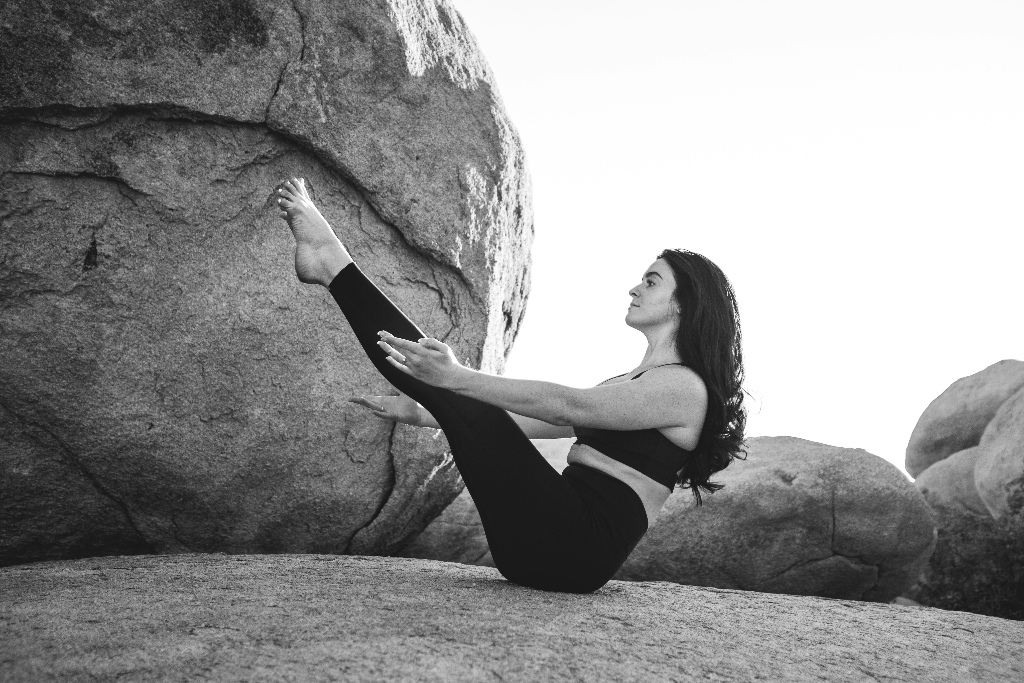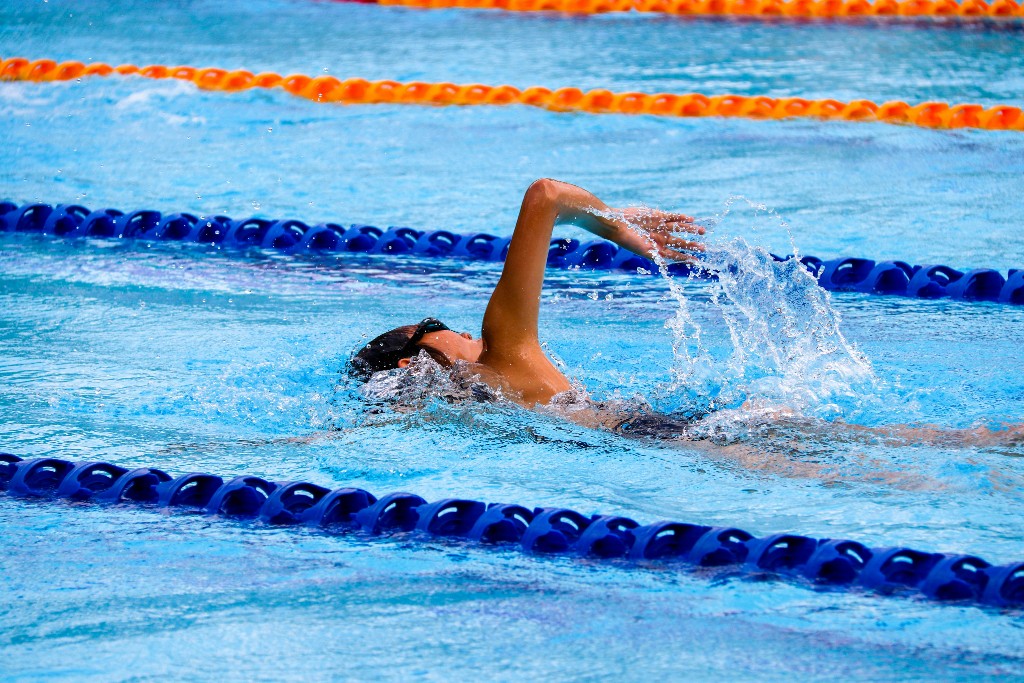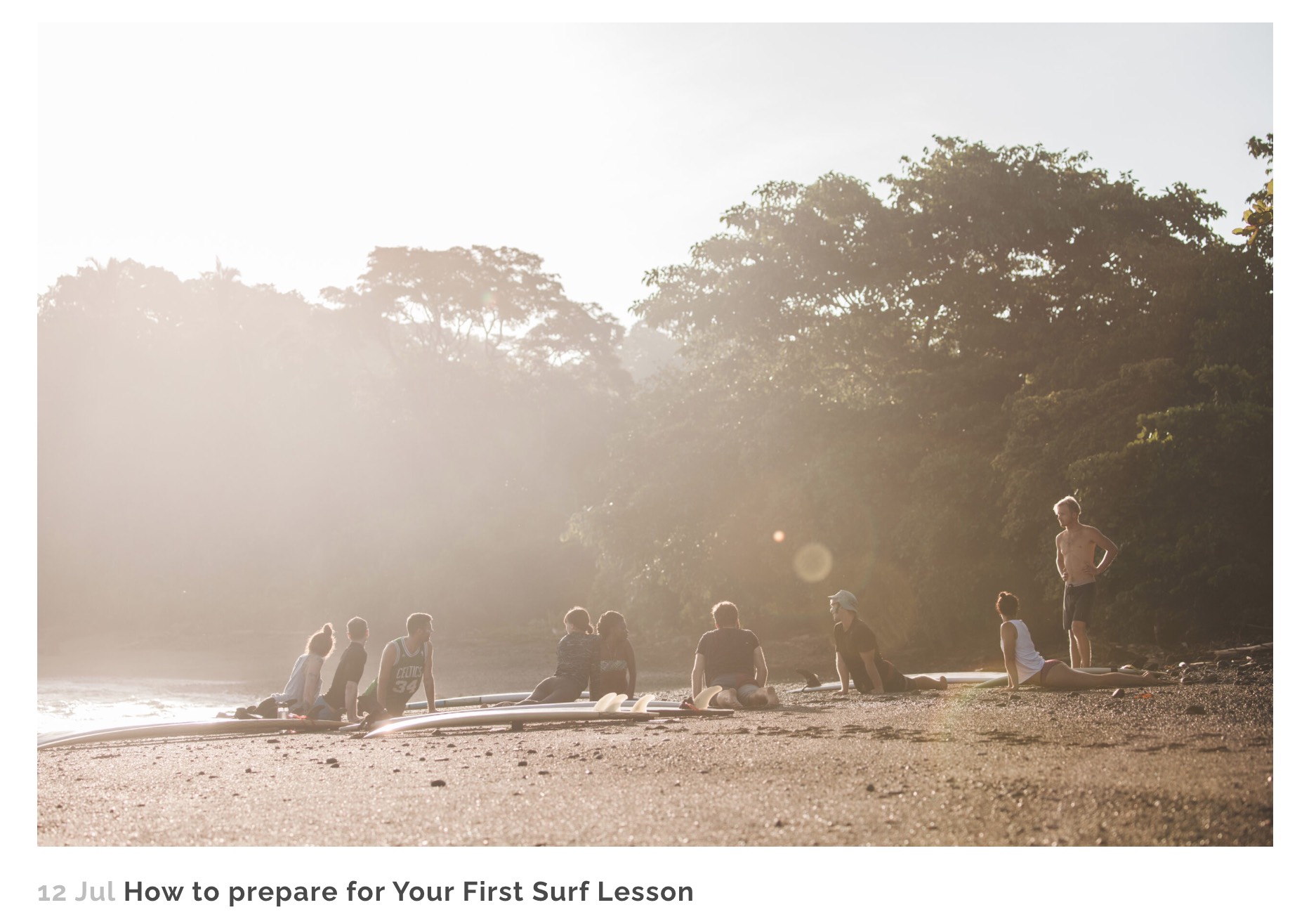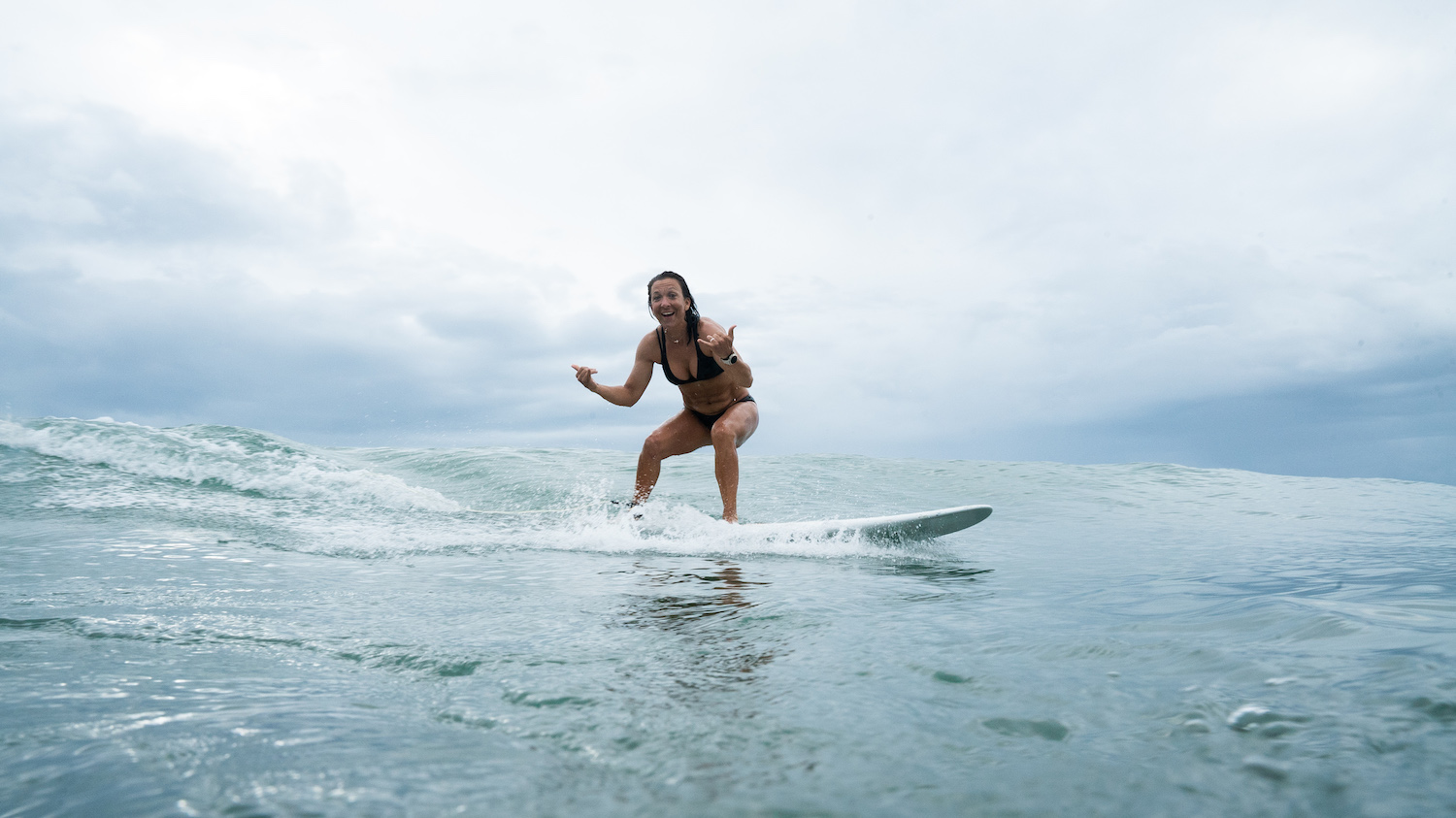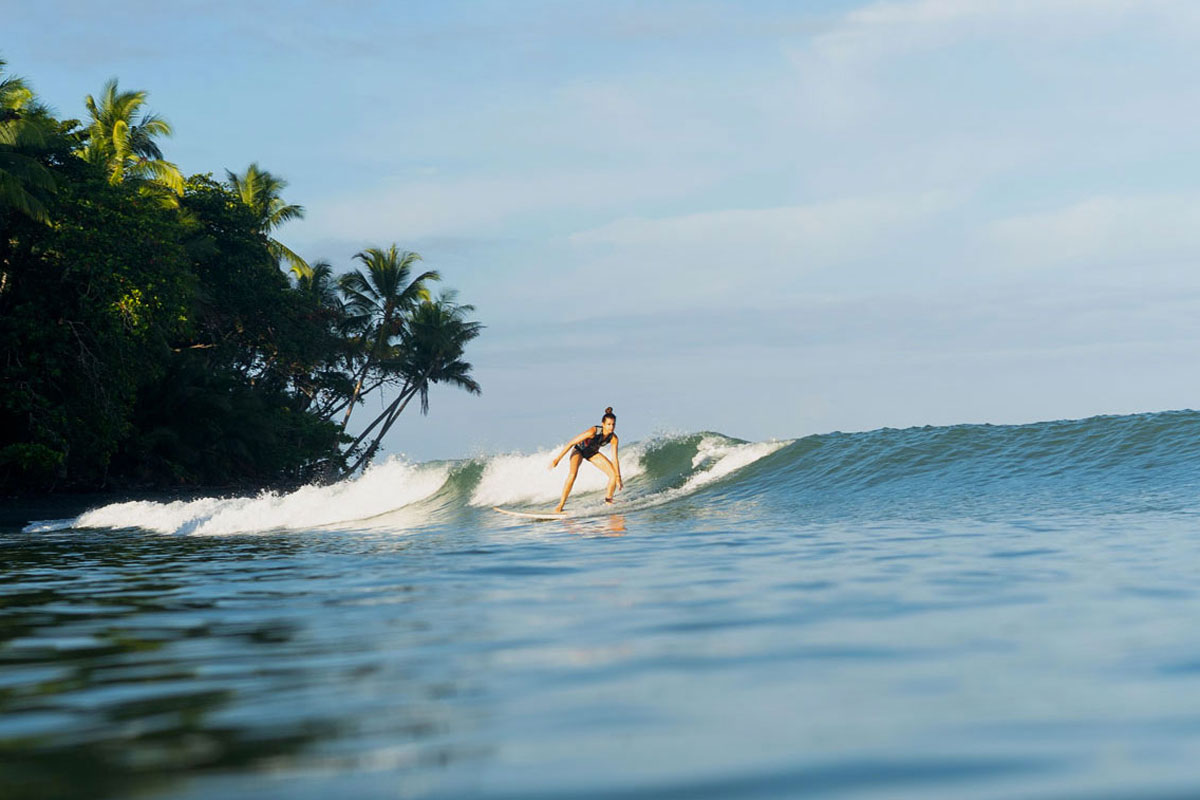
29 Nov Get Fit for Surfing: 11 Exercises That Make Learning to Surf Way Easier
Getting fit for surfing isn’t just about losing weight or building washboard abs, although these may come as side benefits. The real goal is to stick to your own surf fitness exercises, making it more enjoyable and safe.
In this article, learn which surfing workout routines work for you before catching your very first wave. After all, you wouldn’t want to risk injury on your first day of a week-long surf adventure.
To improve your surfing, it’s essential to incorporate surf fitness exercises into your daily life, focusing on strength, balance, and endurance exercises. This guide will help you do just that.
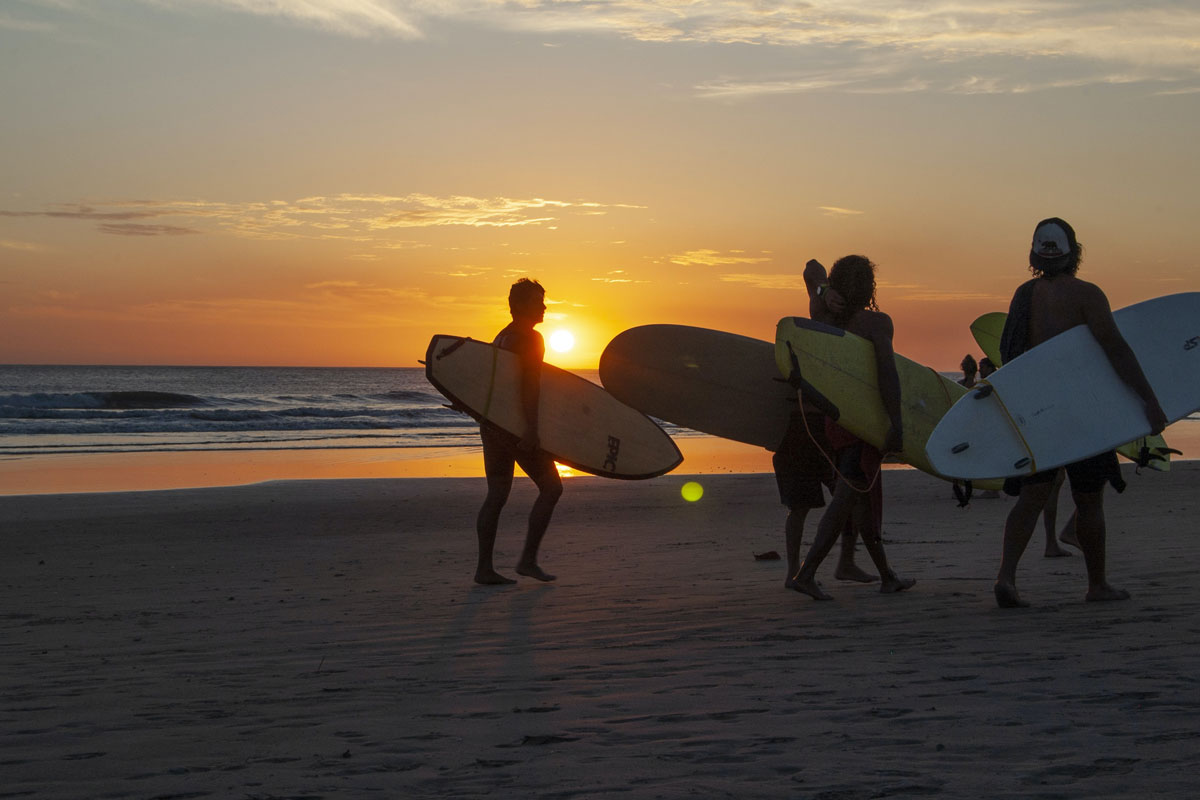
11 key surf fitness exercises to get fit for surfing
In this “Get Fit for Surfing” guide, we’re going to delve right into 11 key exercises for surfers, categorized by strength, balance, and endurance. Then we’ll address common questions beginners might have about getting fit for surfing below.
To make the most of your pre-surf training regimen, we suggest incorporating exercises from all three categories.
While performing these exercises, remember to prioritize proper posture and control. Surfing training isn’t about pushing your physical limits or overexerting yourself during each session.
You’re not competing for a spot on the world tour.
Also bear in mind that these exercises should be fun. Otherwise, you’re not going to do them.
Train with a friend. Take before and after pictures to track your progress. Throw on a podcast while working through a session and make your surf fitness exercises something to look forward to.
Whatever you can do to make training more enjoyable will help you to stick with it.
* These surf fitness exercise might not be suitable for you. To reduce the risk of injury, consult your doctor before beginning this or any other exercise routine.
A quick note on surf fitness exercises
Most of these surfing working routines are designed as bodyweight exercises, meaning they don’t require weights.
However, if you decide to incorporate weights into some of the exercises, you may wonder about the number of repetitions and sets necessary.
Repetitions, or reps, refer to the number of times you perform a single exercise, and a set consists of several consecutive reps.
To prepare for surfing, we recommend aiming for a rep range of 6-12 reps per set and completing 3-5 sets for each exercise, with a rest period of 60-90 seconds between sets.
Upper body strength
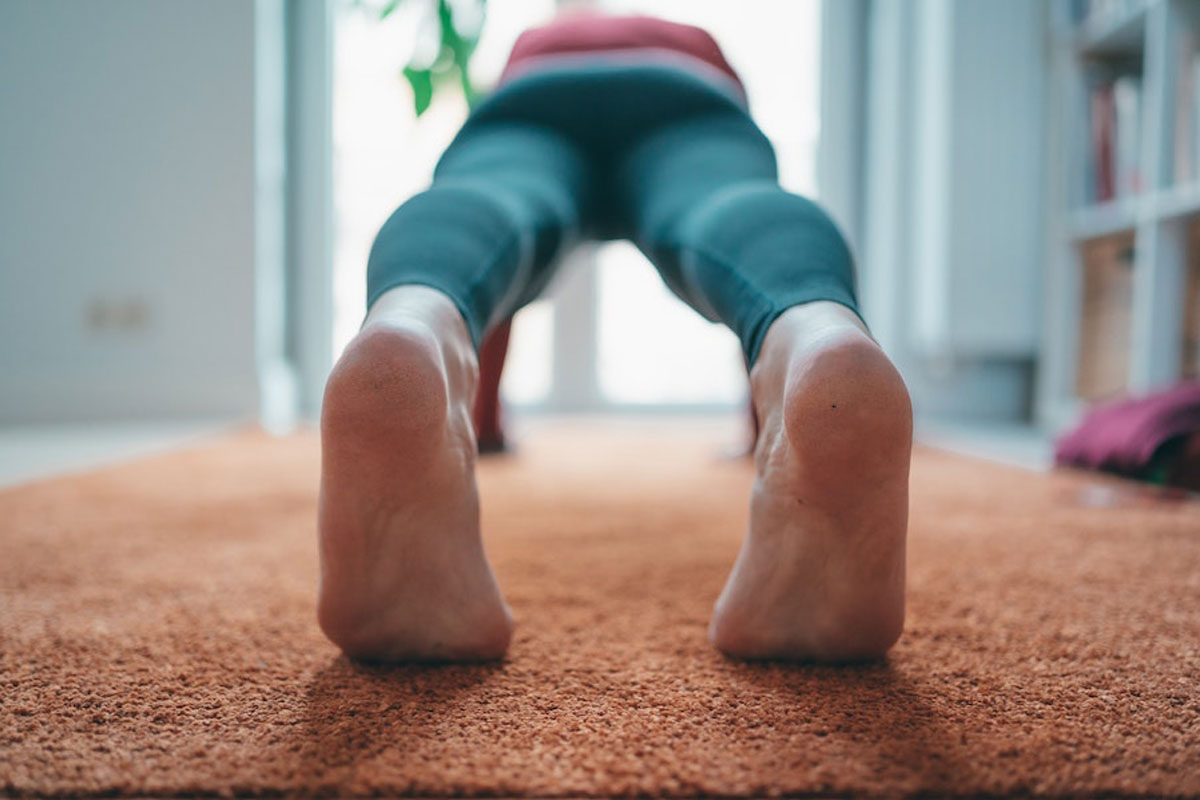
1. Push ups
The push up is a classic surf fitness exercise for a reason.
Not only does it strengthen your upper body (arms, shoulders, upper back and chest) which should be a big part of your surf training, but it also aligns your spine and stabilizes your core.
By incorporating pushups into your surf workout at home routine, you can popup and duck dive easier as well as prevent shoulder burn after only a handful of waves.
PROCEDURE FOR THIS SURF FITNESS EXERCISE:
- Get down on all fours
- Arms should be beneath your shoulders and knees slightly apart
- *Now straighten your arms and your legs
- Lower your body by bending your arms in a controlled motion till your chest almost touches the floor (keeping a straight line from heels to head)
- Pause and push yourself back up
*If you’re not confident that you can support yourself, you can also perform a simple knee-assisted pushup
2. Squats
The movement of squatting is a critical part of surfing.
It mimics the pattern of both crouching on your surfboard and turning. Training by doing squats will also increase strength in your legs and activate the muscles around your spine.
This means it works crucial paddling muscles and supports a healthy back, which is an incredibly important part of the body for surfing.
PROCEDURE FOR THIS SURF FITNESS EXERCISE:
- Stand with feet shoulder-width apart
- Keep your chest out
- Bend at the hips and knees while keeping your back straight and your heels on the ground
- Slowly sit back as if you were sitting on a chair until your knees come to a 90-degree angle
- Straighten back up to a standing position by pushing through your heels
3. Flying superman
This exercise will help you paddle faster and for longer periods.
Called the flying superman, it targets the muscles the run down your spine, which means it more or less replicates the position of laying down on a surfboard while paddling.
PROCEDURE FOR THIS SURF FITNESS EXERCISE:
- Lie face down on a mat with arms outstretched
- Activate the muscles in your back as you lift your arms and legs no less than 10 centimeters off the floor
- Hold for 3-5 seconds while keeping both arms and legs as straight as possible
- Lower back down to the mat in a controlled manner
- Repeat
4. Single foot planks
More than just a passing social media fad, planking is a great way to build strength in your core.
If you want to take planking to the next level, try a single foot plank. It will engage all muscles in the core even more than a standard plank by introducing an element of instability.
PROCEDURE FOR THIS SURF FITNESS EXERCISE:
- Lie face down on a mat with forearms rested and feet shoulder-width apart
- Raise your body off the ground
- Make sure your torso is rigid and your core is engaged
- Lift one leg up to the height of your shoulders
- Hold for 3-5 seconds then bring it down to the mat and alternate legs
Balance
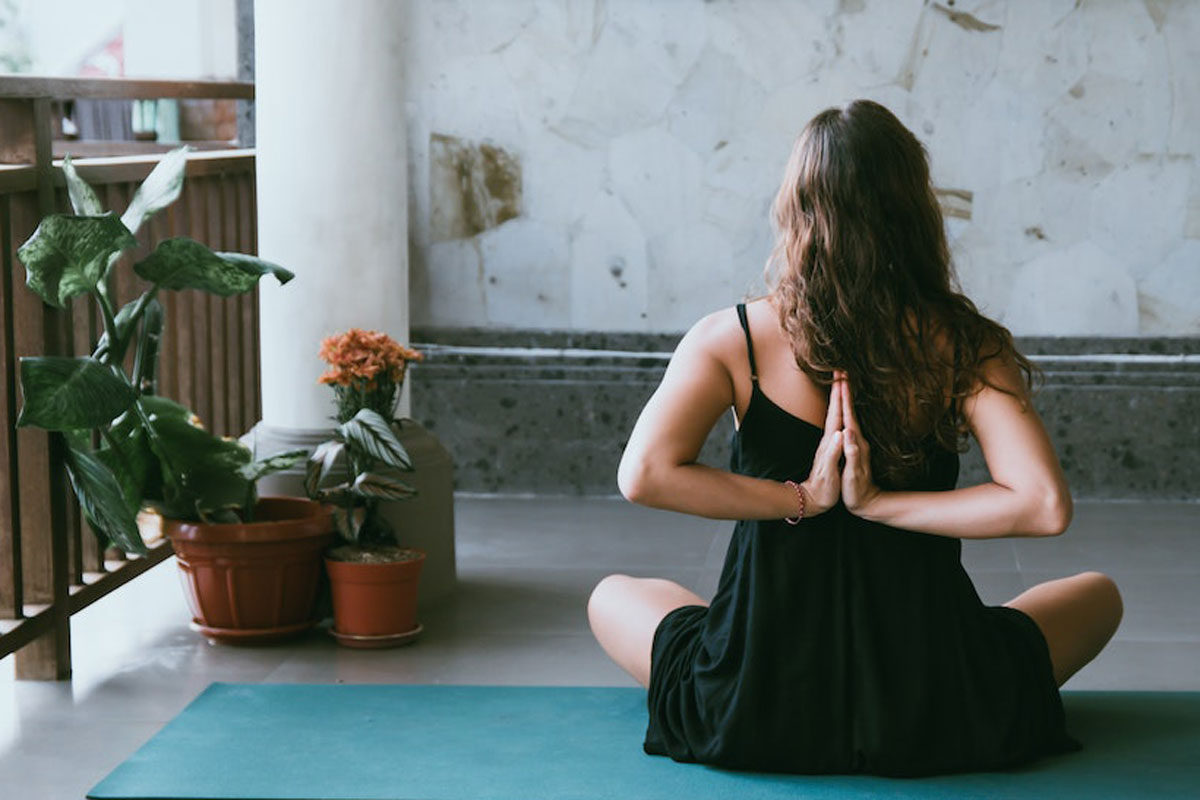
5. Twisting burpees
The explosive action of a burpee is very similar to the action of springing to your feet from a prone position on a surfboard.
Twisting burpees, on the other hand, combine the best part of a pushup and a jump with an added twist that challenges your ability to stay balanced.
If you’ve gotten this far into our surfing workout routines, you should be on your way to get fit for surfing.
PROCEDURE FOR THIS SURF FITNESS EXERCISE:
- Squat down with your hands on the ground in front of you
- Move your weight into your hands then carefully kick both feet backwards so you arrive at a pushup position
- Lower down like a pushup and then jump your feet up towards your hands once again
- Push through your feet and leap upwards
- As you leap, extend your arms into the air and twist 180 degrees so that you’re facing the other way when you land (ready for the next rep).
6. Dynamic lunges
Whether just getting to their feet, crouching into a bottom turn or even getting barreled, surfers are constantly using a variation of the lunge position.
By doing dynamic lunges, you can foster an improved sense of balance through your hips and legs and enjoy more stability when going from a prone to a standing position – something that’s crucial for beginners.
PROCEDURE FOR THIS SURF FITNESS EXERCISE:
- Stand upright with your feet together and your hands on your waist
- Take a step forward with your right or left foot
- Bend at the knees while keeping your back upright to form a 90-degree angle
- Shift the weight into your front foot and push off the ground
- Come back to a standing position and prepare to alternate legs
7. Balance board
Balance boards are a good way to train your balance and leg muscles endurance. It’s also more fun than basic squats. You can find plenty of balance board or indo board exercises on youtube. Basically, you should first stand up on it and find your center. then bend your knees and try to go reach the toe side edge or rail. Then try to jump, do a 180 and land.
8. Yoga poses
Yoga and surfing are like corn chips and guacamole – they just go together.
This is because yoga improves balance by forcing you to hold different poses and explore your range of motion.
What’s more, yoga is a tried and true way to improve your surf skills, given that many pro surfers (including Kelly Slater) also incorporate some type of yoga in their training routine.
Five of the most killer yoga poses for surfers include:
- Downward facing dog
- Pigeon pose
- Eagle pose
- Boat pose
- Upward facing dog
Endurance
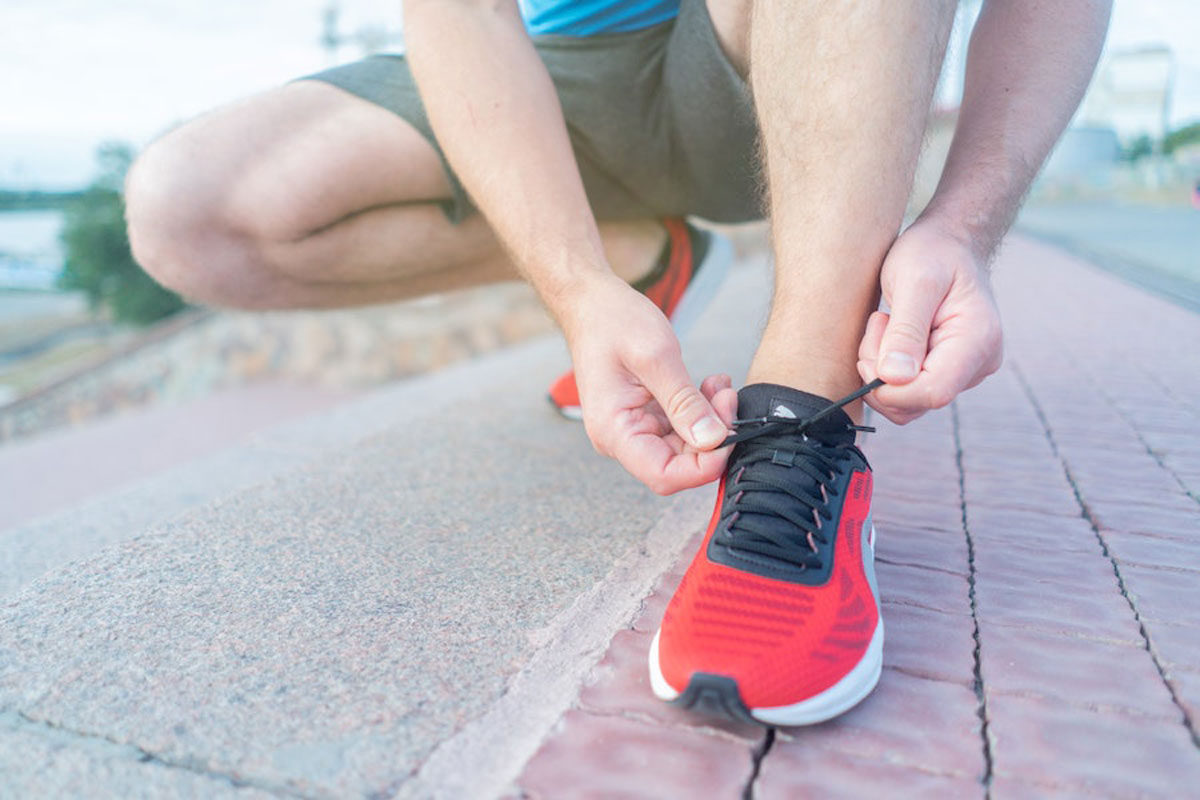
9. Running
It’s not a question of whether surfing will wear you out. It’s more a question of how long it will take until it completely zaps you.
For this reason, we recommend supplementing your strength and balance training with light cardio. And the easiest way to do this is to hit the pavement.
When it comes to running, you have two options: long-distance and sprinting.
Both options will improve lung capacity and help build endurance.
Long-distance running appeals to many because it can induce a deeply relaxing state, known as the “runner’s high.”
On the other hand, sprint training can significantly boost your cardiovascular system.
It also readies your body for the short and explosive bursts of energy required for learning to surf.
10. Mobility drills (CARs)
Mobility is a massive part of endurance. Performing surfing workout routines that enhance your movement could improve how your body moves naturally.
The more naturally you can move your body both in the water and on the land, the less energy you’ll exert and the longer you can surf.
Mobility drills in particular help restore joint range of motion that’s lost through aging or a sedentary lifestyle.
CARs (controlled articular rotations) is one such mobility routine that’s highly beneficial for beginner surfers.
Essentially, the idea behind CARs is that you try to improve control in the outermost limits of your useable range of motion.
This is achieved by gently pushing or rotating your joints.
By doing so, you can send a message to the brain that you control your range of motion.
For a CARs routine that’s easy to do and takes no more than 10 minutes once mastered, check out the video above.
11. Swimming
There’s probably no better way to get fit for surfing than swimming. Performing the freestyle stroke in a swimming pool closely resembles paddling on a surfboard.
When you swim, you engage the muscles in your upper and lower back, arms, and core in a “pulling” motion.
For landlocked surfers preparing for a trip, the benefits of swimming become evident.
In fact, we believe it’s the best way to prepare for a surf trip besides actual surfing. Moreover, being in the water is known to provide numerous mental and physiological advantages.
Our advice? Incorporate swimming into your surfing workout routines.
You can do it once a week or a few times a week. Make swimming a part of your weekly surfing workout routine before hitting the waves.
By jumping in the pool and punching out a few laps, you’ll be in a vastly better place endurance-wise once you start your surf trip.
A Beginner’s Guide to Get Fit For Surfing
Now that we’ve covered the surf fitness exercises you’ll need to work on to prepare for your much awaited trip, let’s address some common questions that beginner surfers often have.
A summary of these questions can be found in this article on how to prepare for your first surf lesson.
Are There Surfing Workout Routines That Help Get Fit For Surfing?
The optimal approach to enhance your surf fitness is, of course, by surfing itself. Nevertheless, we’re covered a wide variety of exceptional surf fitness exercises that you can perform at home, closely mirroring surf movements.
The ultimate goal is to prepare your body for various aspects of surfing. This includes strengthening your upper body muscles, expanding your range of motion, and ultimately fine-tuning your surf maneuvers.
How Fit Do You Need To Be To Learn Surfing?
Surprisingly, you don’t need to be an elite athlete to start learning how to surf.
Skilled coaches can teach anyone, regardless of their fitness level. However, having some degree of fitness can make the learning process smoother since surfing can be physically demanding, especially for beginners.
A general rule of thumb is that if you can complete a popup on land, you should be able to get to your feet on a surfboard.
Will Being In Shape Improve My Surfing?
Yes and no. Mostly yes. 🙂
Being in good physical condition can expedite the learning process since you’ll be better equipped to handle the physical demands of surfing. Possessing upper body strength and endurance will undeniably assist you in catching waves during your next surf session.
However, even if you’re not in peak physical condition, you can still stand up on a surfboard and ride your first waves. This is primarily because we conduct coaching sessions in small groups, maintaining a ratio of 3-4 students per coach.
Consequently, you’ll receive a substantial amount of individualized attention during your session. Furthermore, based on our experience with surf retreats, this individualised method successfully reduces differences in pupils’ natural talent or fitness.
Can You Do Surf Workout Routines at Home?
The great thing about surf training is that you don’t need a fully equipped gym to get started. A yoga mat is the bare minimum, and you can gradually add equipment like elastic stretch bands, kettlebells, trainers, and foam rollers as you progress.
With discipline and the exercises outlined below, you can get fit for surfing from the comfort of your living room.
Really though, a yoga mat and a list of the strength, balance and endurance exercises we’ve outlined below will do the trick. You could even try wall pilates, which basically only require having a mat and.. a wall!
So don’t worry about joining a gym before you fly to Costa Rica. Get fit for surfing in the comfort of your own home.
Which Upper Body Muscles Should I Focus on with Surf Fitness Exercises?
Surfing engages the entire body. Whether it’s carrying your board to the shoreline, paddling, executing pop-ups, or riding a wave, you involve both large and small muscle groups.
As a result, when engaging in surf fitness training, it’s advisable to incorporate exercises that target various areas of the body. Exercises that emphasize upper body muscles, including shoulders, chest, upper back, and arms, are particularly beneficial for paddling.
These same muscle groups, in addition to your core, contribute to the pop-up motion. When it comes to riding the whitewash or a green wave, your hips and legs take on the primary load.
Nevertheless, there is often some overlap in surf-related movements, and a strong core is consistently advantageous.
Isolating specific muscles, such as the biceps, can also be beneficial, particularly when recovering from a specific injury or addressing muscular imbalances in the body.
Get fit for surfing and push your limits with us!
Interested in starting to surf in a safe and encouraging environment or giving yourself the opportunity to jump up your progression?
Join us for a surf coaching retreat in Costa Rica.
Other Resources
Read this article for more information about preparing for your first surf trip.
We’ve collected 40 surf quotes to inspire and prepare you mentally before you jump into the water.
Find out the difference in swell and season in our best times to surf in Central America article.
Learn everything about the surf gear essentials
Find more about the things you need to know as a beginner before surfing, especially in Costa Rica.
Feel free to reach us if you have questions.

